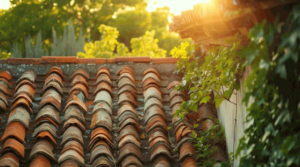LED lighting has changed the way we illuminate our spaces, offering a blend of efficiency and innovation, and contributing to sustainable lighting solutions.
What is LED lighting, and how does it work? We explore its benefits, such as energy efficiency and life-cycle assessments, while also addressing potential risks, including blue light hazards.
We examine the sustainability of LED technology and ways to enhance its eco-friendliness, in alignment with the UN Global Goals. Join us to discover the future of lighting!
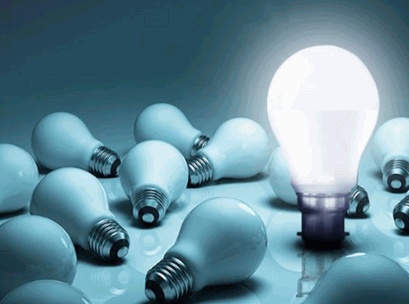
What Is LED Lighting?
LED lighting, or light-emitting diode lighting, is a modern form of artificial lighting that utilises semiconductor materials to produce light when an electrical current passes through them.
Unlike traditional incandescent lights and Compact Fluorescent Lights, LED technology offers superior energy efficiency, longer service lives, and reduced environmental impact, making it an increasingly popular choice for both residential and commercial light fixtures worldwide.
Look into: How To Install Retrofit LED Recessed Lighting
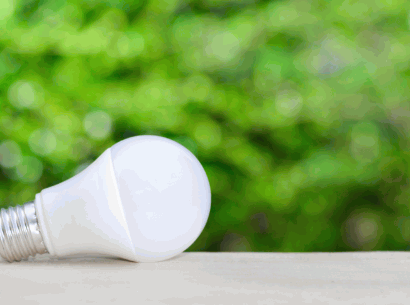
How Does LED Lighting Work?
LED lighting operates through a simple yet effective mechanism where an electrical current passes through a semiconductor, producing light through a process known as electroluminescence, while simultaneously requiring effective thermal management to ensure longevity and efficiency.
This phenomenon occurs when electrons in the semiconductor material become excited and release energy in the form of light. As with any electronic device, LED devices generate heat during this process, necessitating advanced thermal management techniques to optimise light output and combat heat emission.
- Effective thermal management strategies
- Use of heat sinks
- Proper airflow design
are crucial in maintaining optimal light emissions and enhancing the overall efficiency of LED lighting systems. Paying attention to these factors can mean the difference between a short-lived lighting solution and one that consistently delivers bright, reliable illumination, thus promoting eco-friendly practices.
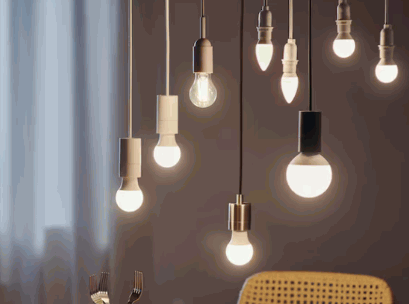
What Are The Benefits Of LED Lighting?
The benefits of LED lighting are numerous, including exceptional energy efficiency that leads to significant cost savings, an extended lifespan that surpasses traditional lighting options, and the ability to enhance light quality and distribution, all while being environmentally friendly, reducing energy consumption, and minimising light pollution.
Energy Efficiency
Energy efficiency is one of the hallmark benefits of LED lighting, as it consumes significantly less energy compared to traditional light sources like incandescent lights and Compact Fluorescent Lights, thereby reducing overall energy consumption and lowering greenhouse gas emissions in alignment with the goals of sustainable development.
In fact, studies indicate that LEDs use at least 75% less energy than their incandescent counterparts, making them a far more sustainable choice. For instance, replacing a standard 60-watt bulb with a 10-watt LED bulb can lead to substantial savings over time. This reduction not only translates to lower electricity bills but also means that fewer fossil fuels are being burned to produce the electric power we consume, contributing to lower carbon footprints.
- LED lights typically last 25,000 hours or more, compared to around 1,000 hours for incandescent bulbs.
- By choosing LED lighting, households can reduce their carbon footprint significantly, fostering a cleaner environment and supporting the principles of the International Dark-Sky Association.
As consumers look for ways to lessen their environmental impact, opting for energy-efficient lighting solutions like LEDs can make a significant difference.
Longer Lifespan
One of the significant advantages of LED lighting is its remarkably longer lifespan, often exceeding 25,000 hours, which is substantially longer than traditional light sources, leading to fewer replacements and less waste in light fittings.
This impressive durability not only minimises the frequency of bulb changes but also contributes significantly to environmental sustainability, aligning with efficient manufacturing processes. When we compare LED bulbs to incandescent or fluorescent options, the difference is staggering. For instance, an incandescent bulb typically lasts around 1,000 hours, resulting in a much higher turnover and corresponding waste. In contrast, the lifecycle of LED lighting can save households and businesses from disposing of dozens of bulbs over the same period, underscoring the importance of recycling aluminium and other materials.
- With less waste comes reduced demand for raw materials, indirectly lessening the carbon footprint associated with manufacturing.
- The energy efficiency of LED bulbs, which consume up to 80% less energy than traditional bulbs, allows for substantial savings on electricity bills.
As more people embrace this technology, it is clear that switching to LED lighting not only brightens up spaces but also helps foster a greener planet.
Cost Savings
Cost savings are a notable benefit of LED lighting, as the initial investment is often offset by reduced energy costs and a longer lifespan, leading to significant savings over time when accounting for recycling aluminium and efficient manufacturing processes in the LED industry.
Many individuals and businesses may find the long-term cost benefits of LED lighting particularly appealing, especially when one factors in the substantial decrease in electricity bills. The energy efficiency of LED lights allows for less power consumption, which can lead to lower utility expenses each month.
Compared to traditional lighting options, LEDs have a longer operational life, meaning replacements occur less frequently, thus saving on labour and material costs associated with maintenance.
LEDs are manufactured using recyclable materials, making them a sustainable choice that not only benefits the budget but also the environment. This recycling capability strengthens their value proposition as it fosters a circular economy, reducing waste and promoting better resource management, which is vital for achieving sustainable development.
- Reduced energy consumption
- Longevity leads to fewer replacements
- Recyclability contributes to sustainability
Eco-Friendly
LED lighting is considered environmentally friendly due to its minimal environmental impact, as it reduces light pollution, lowers energy consumption, and contains no hazardous materials, making it a safer choice for both users and the environment, thus contributing to the goals of the United Nations.
When examining the environmentally friendly attributes of LED technology, it becomes clear that these lights not only diminish light pollution—which is a growing concern in urban areas—but also offer significant energy savings compared to traditional incandescent bulbs. For instance, a typical LED light consumes up to 75% less energy, translating into lower utility bills and reduced greenhouse gas emissions.
- In contrast, older lighting options, such as fluorescent lights, often contain toxic elements like mercury, which must be disposed of carefully to avoid environmental contamination.
- Cities that have adopted LED streetlights have reported a dramatic decrease in light pollution, creating more favourable conditions for nocturnal wildlife.
By opting for LED solutions, not only do users benefit from long-lasting durability—often lasting up to 25 times longer than traditional options—but they also contribute to a healthier, greener planet, promoting the use of smart lighting technologies.
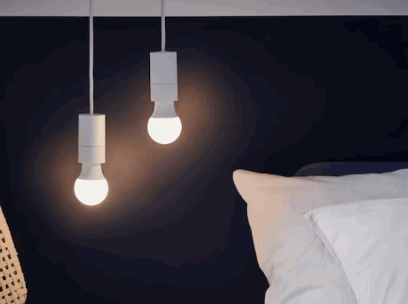
What Are The Potential Risks Of LED Lighting?
While LED lighting offers numerous benefits, potential risks exist, including the blue light hazard that may affect sleep patterns and health, along with heat emissions that can influence thermal management, and concerns regarding the presence of toxic elements in some LED products, highlighting the need for comprehensive product lifespan assessments.
Blue Light Hazard
The blue light hazard associated with LED lighting has garnered attention due to its potential effects on health, particularly its impact on sleep patterns and eye strain, raising questions about long-term exposure to blue light emissions.
Recent studies have shown that LED lights, commonly used in homes and workplaces, emit significantly higher levels of blue light compared to traditional incandescent bulbs. This increase in blue light exposure can disrupt our circadian rhythms, leading to difficulties in falling asleep and staying asleep, ultimately affecting overall wellbeing. Prolonged exposure may contribute to digital eye strain, resulting in discomfort and temporary vision issues, underscoring the necessity for light management techniques.
To mitigate these health risks, individuals can take several proactive steps, including using smart lighting solutions that allow for better control of light emissions.
- Use blue light filters on devices and screens.
- Incorporate warmer lighting options during evening hours.
- Establish a digital curfew to reduce screen time before bed.
By implementing these strategies, one can better manage the effects of blue light and promote healthier sleep and eye health, while also making informed consumer choices toward sustainable lighting.
Heat Emissions
Heat emissions from LED lighting can pose challenges, necessitating effective thermal management strategies to ensure optimal light output and longevity of the fittings.
As these fittings become increasingly popular in various applications, understanding how heat dissipation occurs becomes crucial to maximising their efficiency. LEDs emit heat primarily through electrical resistance and imperfect phosphor conversion, which can compromise both performance and lifespan if not properly managed.
- Heat sinks, designed to absorb and dissipate heat, are commonly employed to keep operating temperatures at bay.
- Active cooling methods, such as fans and liquid cooling, may also be utilised in high-powered installations.
By employing these thermal management techniques, users can mitigate heat-related issues effectively and enhance the sustainability of their lighting solutions.
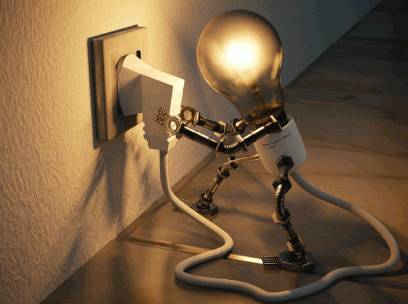
Is LED Lighting Sustainable?
The sustainability of LED lighting is a crucial consideration, as it significantly impacts energy consumption and has a favourable environmental footprint when evaluated through life-cycle assessments compared to traditional lighting options.
Impact On Energy Consumption
The impact of LED lighting on energy consumption is profound, as its energy efficiency translates into lower overall energy use, subsequently reducing greenhouse gas emissions and promoting sustainable practices.
The transition to LED lighting represents a significant shift in how energy is utilised across households and businesses. Compared to traditional incandescent and fluorescent lights, LEDs consume up to 80% less energy, leading to substantial savings on electricity bills.
In fact, a standard LED bulb can last approximately 25,000 hours, while an incandescent bulb may only last around 1,000 hours. This drastic difference means that consumers not only experience reduced energy costs but also a lower frequency of replacements.
- Long-term energy savings can amount to hundreds of pounds annually.
- Adopting LED technology contributes to less landfill waste.
- Communities see a decrease in energy demand, fostering environmental sustainability.
The use of LED lighting provides both immediate and ongoing benefits, supporting a greener future while enhancing personal finances.
Impact On The Environment
LED lighting contributes positively to the environment by minimising light pollution, reducing energy consumption, and promoting sustainable lighting practices that facilitate recycling and proper disposal.
Not only does it shine a brighter light on eco-friendliness, but LED lighting also plays a crucial role in safeguarding wildlife that is often disrupted by excessive illumination.
For instance, many nocturnal species struggle to navigate their habitats when bright, traditional bulbs scatter light indiscriminately. LED lighting uses significantly less energy compared to incandescent alternatives, which translates into lower carbon emissions and reduced strain on natural resources.
A study highlighted that a whole community switching to LEDs can save thousands of kilowatts annually, further endorsing sustainable practices. Many LEDs are designed for longevity, which encourages initiatives for recycling materials, thereby lessening landfill contributions.
Communities can actively participate in recycling programmes that utilise the components of outdated lighting fixtures, paving the way for a greener future.
Comparison To Other Lighting Options
When compared to traditional lighting options such as incandescent lights and Compact Fluorescent Lamps, LED lighting stands out with superior energy efficiency, a longer product lifespan, and a significantly lower environmental impact.
This compelling advantage becomes evident when analyzing various metrics associated with these lighting technologies. For instance, LED bulbs consume approximately 75% less energy than incandescent bulbs, making them incredibly cost-effective in both residential and commercial settings.
In terms of lifespan, while incandescent lights may last around 1,000 hours, LEDs can shine brightly for over 25,000 hours, dramatically reducing the frequency of replacements. The environmental effects are notable; traditional bulbs contain harmful materials like mercury, contributing to hazardous waste, while LEDs are more eco-friendly and can often be recycled.
- Energy Consumption: LED = 10 watts; Incandescent = 60 watts
- Lifespan: LED = 25,000 hours; CFL = 10,000 hours; Incandescent = 1,000 hours
- Environmental Impact: LED = Low; CFL = Moderate (due to mercury)
This evidence underscores why making the switch to LED lighting is not just financially prudent but also beneficial for the planet.
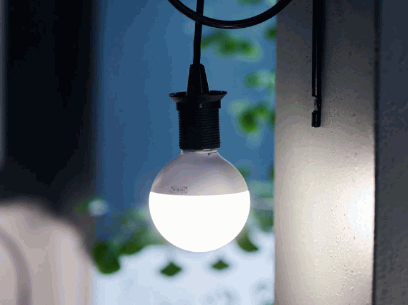
How Can We Make LED Lighting More Sustainable?
To enhance the sustainability of LED lighting, it is essential to focus on proper disposal methods for old LED lights, adopt energy-saving practices in daily use, and support manufacturers that prioritise sustainable development in their manufacturing processes.
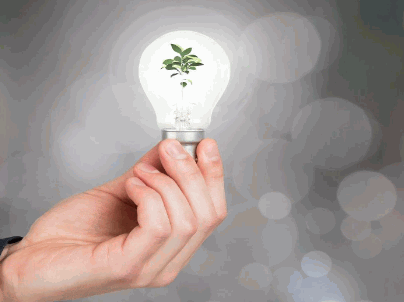
Proper Disposal Of Old LED Lights
Proper disposal of old LED lights is crucial, as improper disposal can lead to the release of hazardous materials, while recycling programmes can facilitate the safe processing of materials like aluminium panels.
When considering how to handle their old lighting, individuals should be well aware of the potential environmental impacts. By choosing to recycle rather than throw away, they contribute to a more sustainable future. Many local communities offer convenient drop-off points or designated collection days specifically for this purpose. It is essential to check local regulations and guidelines to ensure compliance.
Recycling LED lights not only conserves valuable resources but prevents harmful substances from contaminating landfill sites.
- Always remove any attached components, such as batteries or housings.
- Store the lights safely until they can be disposed of properly.
- Seek out certified recycling programmes in your area.
By following these best practices, responsible disposal becomes achievable.
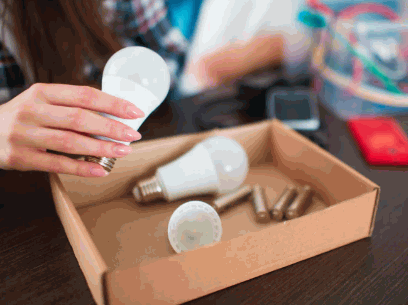
Using Energy-Saving Practices
Implementing energy-saving practices in conjunction with LED lighting can significantly reduce overall energy use, with smart lighting systems able to optimise illumination based on needs and occupancy.
By incorporating a variety of innovative approaches, individuals can enhance their energy efficiency and lower utility bills. Smart lighting not only allows for customisable brightness settings but also seamlessly integrates with motion sensors that activate lights only when someone is present.
- Using timers to schedule lighting according to specific routines can further minimise unnecessary energy expenditure.
- For instance, dimming lights during daytime hours can save energy while still providing adequate lighting when needed.
These strategies collectively contribute to a more sustainable environment, showcasing how simple adjustments can lead to substantial benefits for both the homeowner and the planet.
Choosing Quality LED Products
Choosing quality LED products is vital to ensure optimal performance in terms of luminous efficacy and light quality, as not all LED bulbs and fixtures are created equal. It’s essential to invest in products that meet high standards.
This investment not only affects energy consumption but also impacts the overall atmosphere and efficiency of your space. Before making a purchase, consumers should take the time to research various options and select reputable LED products. This means paying close attention to aspects such as:
- Luminous efficacy ratings
- Colour temperature
- Wattage and brightness comparisons
- Manufacturer’s specifications
Understanding these specifications helps in making an informed decision, ensuring that the chosen products meet specific lighting needs while providing the best value for your money.
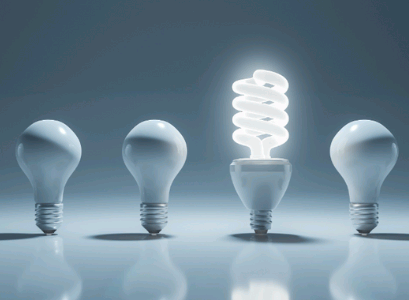
Supporting Sustainable LED Manufacturers
Supporting sustainable LED manufacturers plays a crucial role in promoting environmentally friendly lighting solutions, as these companies often prioritize sustainable development and responsible manufacturing processes.
When consumers make informed choices about their lighting options, they indirectly foster a market that values environmental stewardship. To identify manufacturers dedicated to sustainability, look for certifications such as Energy Star or RoHS compliance, which indicate adherence to rigorous environmentally friendly standards.
Scrutinizing a company’s transparency regarding sourcing materials and energy usage can provide valuable insights. Consider investigating companies that actively participate in recycling programmes or carbon offset initiatives.
- Research product reviews from reputable sources.
- Visit company websites to read about sustainability efforts.
- Engage in community discussions about environmentally friendly brands.
By aligning purchasing decisions with environmentally friendly practices, consumers can support a greener future.

